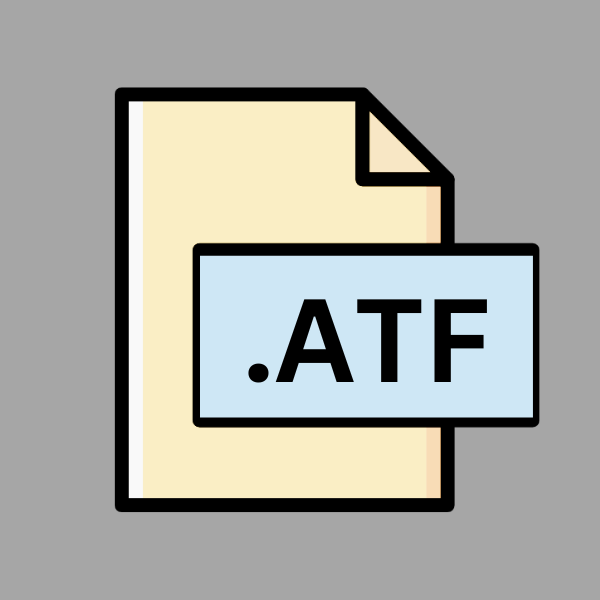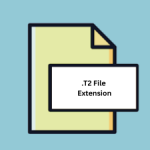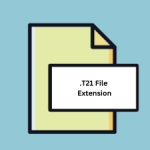.ATF File Extension

Axon Text File
| Developer | Molecular Devices |
| Popularity | |
| Category | Data Files |
| Format | .ATF |
| Cross Platform | Update Soon |
What is an ATF file?
The .ATF file extension is primarily associated with Axon Text Files, which serve as containers for textual data.
These files are utilized across diverse domains, including software development, data analysis, and scientific research, owing to their simplicity and versatility in storing textual information.
More Information.
The inception of .ATF files coincides with the evolution of Axon as a programming language. Developed in the late 20th century by a team of software engineers seeking to streamline the process of software development, Axon aimed to bridge the gap between traditional programming languages and emerging technologies.
.ATF files were conceived as a fundamental component of this vision, providing a standardized format for storing and exchanging textual data.
Origin Of This File.
The origins of .ATF files trace back to the development of the Axon programming language. Axon, a high-level programming language designed for rapid application development, introduced .ATF files as a means to store and manipulate textual data within its ecosystem.
The language prioritizes simplicity and efficiency, making it suitable for various applications ranging from scripting to web development.
File Structure Technical Specification.
At its core, an .ATF file comprises plain text encoded in ASCII or Unicode format. The structure of the file is straightforward, consisting of a sequence of characters organized into lines and paragraphs.
Unlike binary formats, .ATF files are human-readable, facilitating easy comprehension and manual editing.
From a technical standpoint, .ATF files do not impose strict limitations on file size or line length, allowing for flexibility in storing large volumes of textual data.
The file format lacks built-in support for advanced formatting features such as font styles, colors, and multimedia content, focusing primarily on textual representation.
How to Convert the File?
Converting .ATF files to alternative formats can be achieved through various methods depending on the desired output format and the tools available.
One common approach is to use text processing utilities or scripting languages to parse the contents of the .ATF files and generates output in the desired format, such as HTML, XML, or PDF.
Alternatively, specialized conversion software or online services may offer streamlined solutions for converting .ATF files to popular document formats compatible with word processors, web browsers, or document management systems.
Advantages And Disadvantages.
One of the key advantages of .ATF files lie in their simplicity and portability. As plain text files, they can be opened and edited using a wide range of text editors and programming environments, ensuring compatibility across different platforms and software applications.
Additionally, the absence of complex formatting reduces file size and enhances accessibility, particularly in contexts where bandwidth and storage resources are limited.
The minimalist nature of .ATF files also present certain limitations. Without support for advanced formatting options, such as embedded images or hyperlinks, they may not be suitable for conveying rich multimedia content or structured documents requiring precise layout specifications.
Moreover, the reliance on plain text encoding may pose challenges in scenarios where non-ASCII characters or specialized character sets are involved, potentially leading to encoding errors or data loss.
How to Open ATF?
Open In Windows
- Use built-in text editors like Notepad or WordPad. Right-click the .ATF file, select “Open with,” and choose your preferred text editor.
- Alternatively, you can use third-party text editors like Sublime Text, Notepad++, or Visual Studio Code.
Open In Linux
- Open .ATF files using text editors such as gedit, nano, or Vim from the command line.
- You can also use graphical text editors like Sublime Text, Atom, or Kate.
Open In MAC
- .ATF files can be opened using the built-in TextEdit application.
- Alternatively, you can use third-party text editors like Sublime Text, Atom, or Visual Studio Code.
Open In Android
- Install a text editor app from the Google Play Store, such as QuickEdit Text Editor, Jota Text Editor, or Microsoft Word.
- Once installed, navigate to the .ATF file using a file manager app and open it with the chosen text editor.
Open In IOS
- Use text editing apps available on the App Store like iA Writer, Textastic Code Editor, or Pages.
- Navigate to the .ATF file using the Files app or a third-party file manager, then open it with the selected text editor.
Open in Others
- .ATF files can be opened on other operating systems using compatible text editors or by converting them to universally supported formats like plain text (.txt) or HTML.
- If the operating system supports text viewing, simply open the file with the default text viewer or editor.













